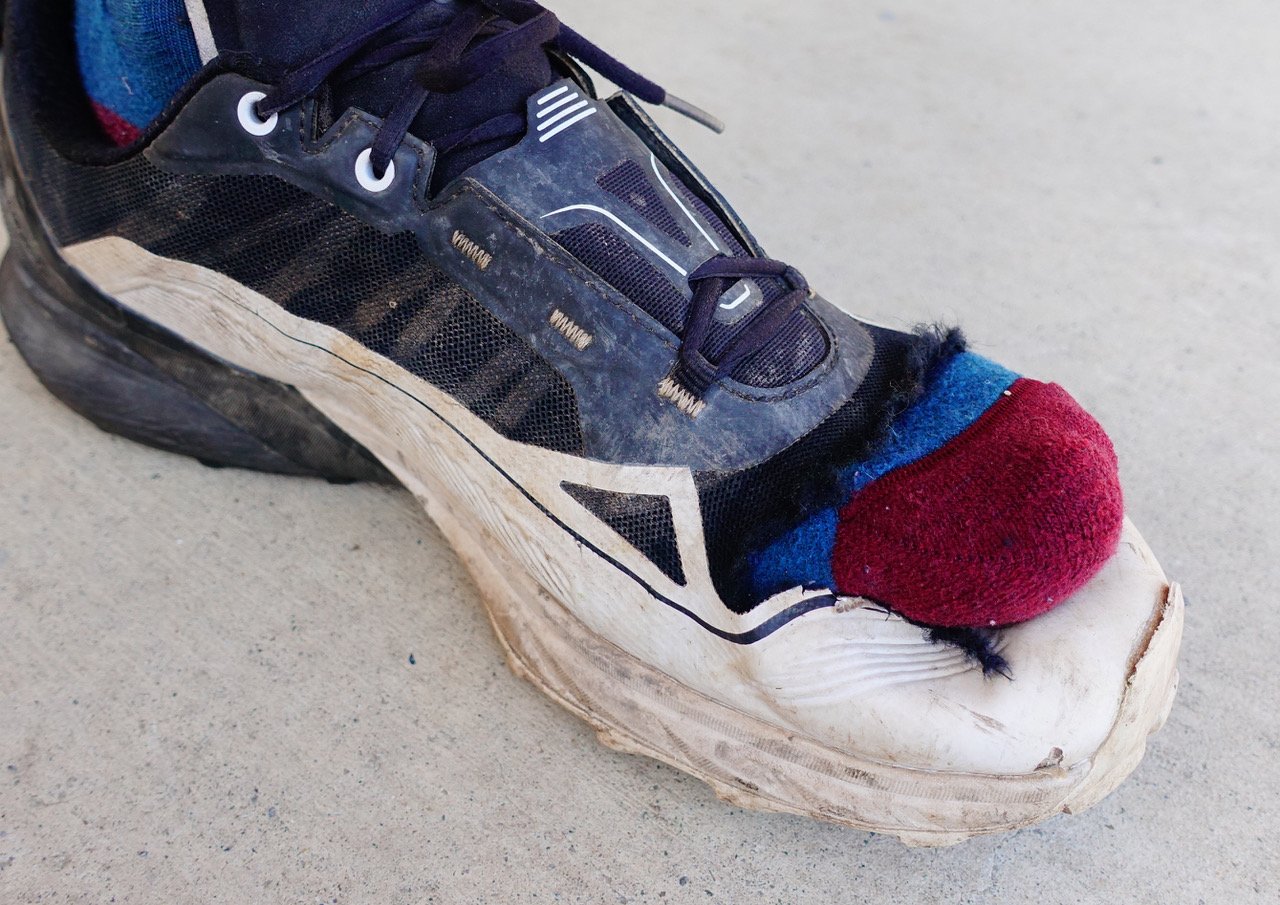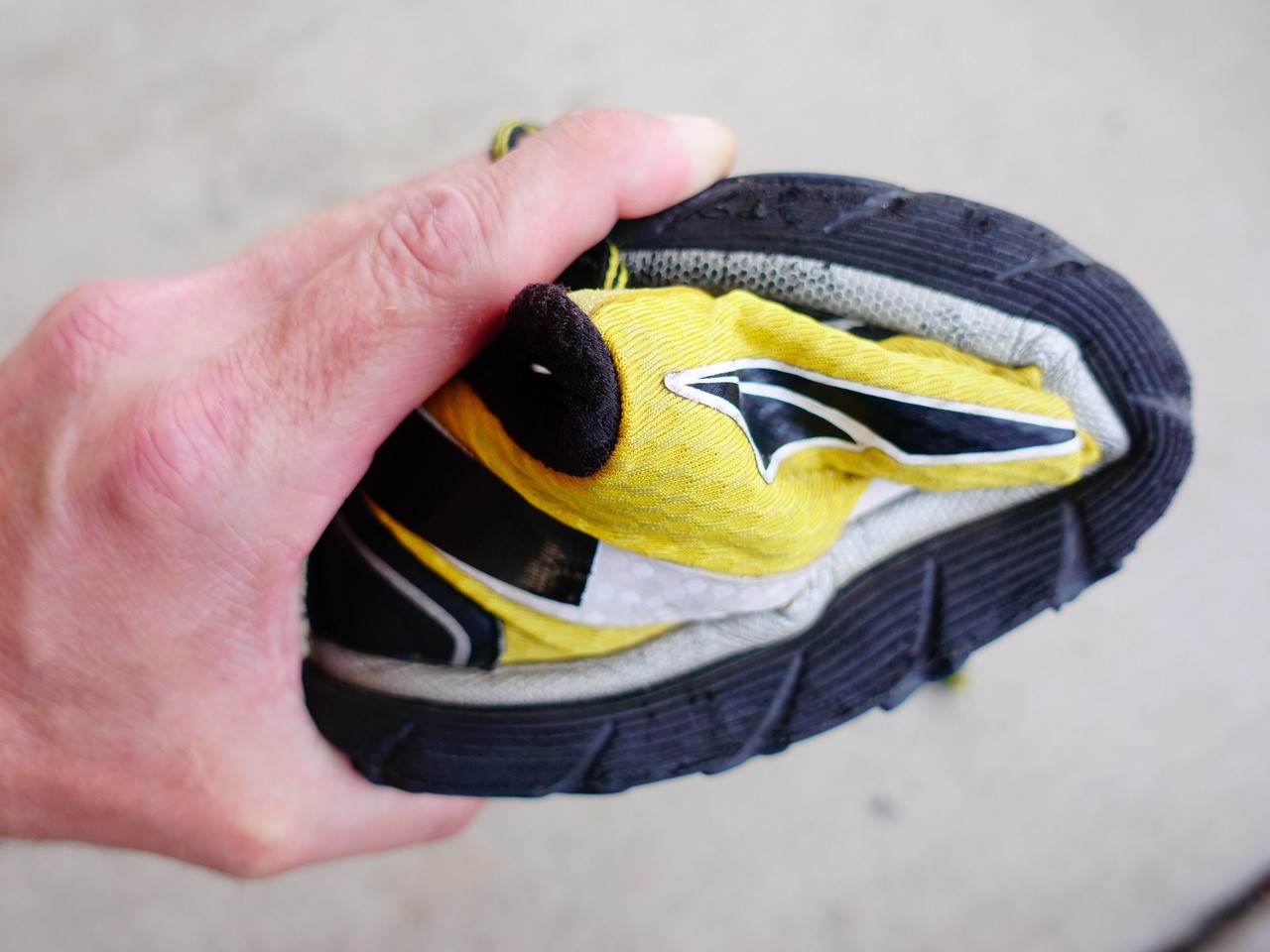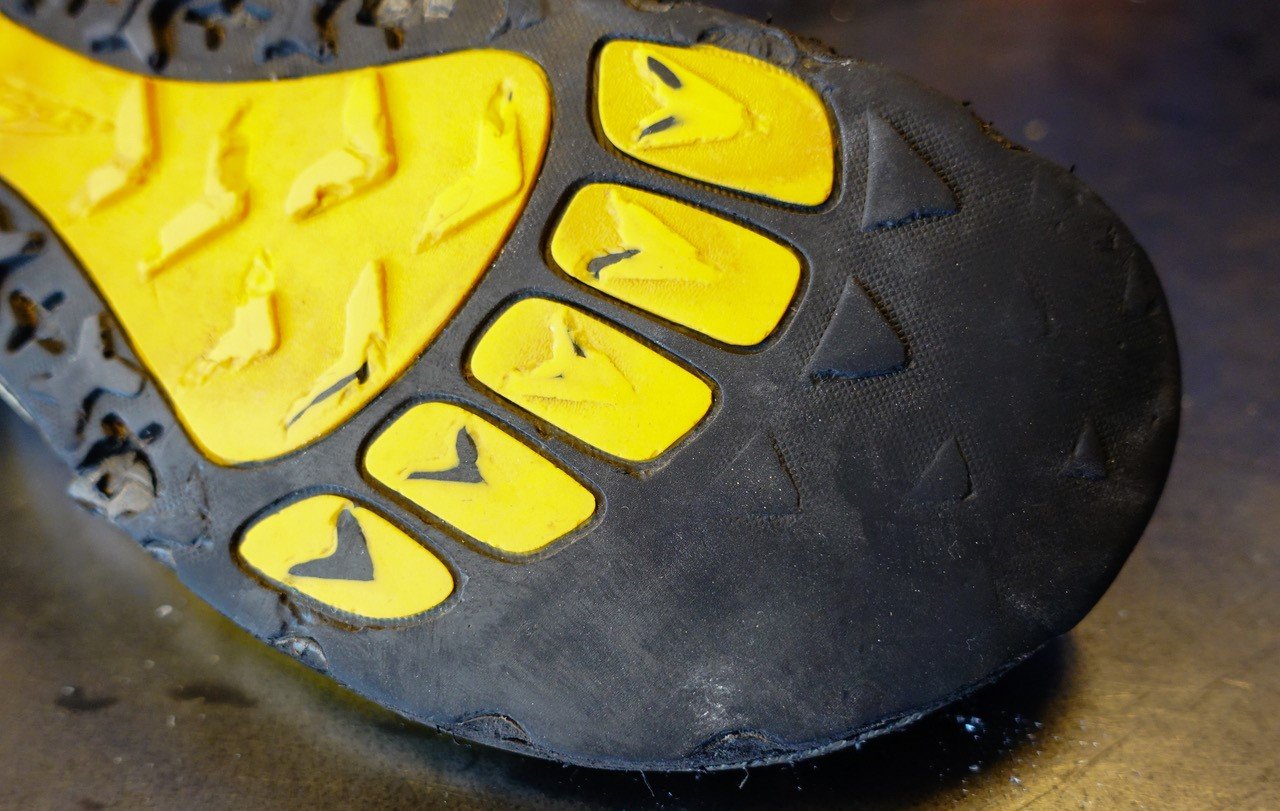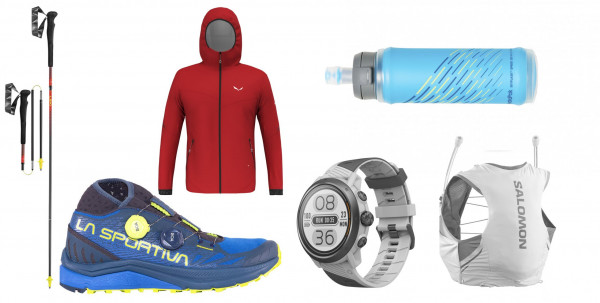6/21/2023 The Writing on the Wall: It May Be New Shoe Time
There is a consensus that trail shoes should last somewhere in the 300-500 mile range. While keeping track of the overall mileage run in your shoes is often a good idea, there are several other factors to consider when deciding whether or not it may be time to retire your go-to shoes. After all, trail shoes are expensive, but if they aren't falling apart should you still be running in them? Let’s jump into the parts that make up a shoe, signs that they are breaking down, and how to get more life out of them.
The Upper
In trail running shoes this is often a breathable fabric or mesh that protects your foot and keeps it securely in place. It is held together by laces which can be traditional, quick pull, or a Boa-type dial which is increasing in popularity. Wear and tear on the upper is the easiest to spot as it’s rather hard to ignore holes in your toe box as you are lacing up to head out on your favorite trail. Shoe manufacturers strive to make more durable shoes but robust materials can be heavier and more expensive. Terrain choice, running style, and materials used can all be factors in how long the upper of a shoe lasts. Pro tip: If you can trim your toenails with your shoe on, it may be time to look for a replacement.

The Midsole
Arguably the most important part of the shoe’s performance is the midsole. The midsole is most often ethylene vinyl acetate (EVA) or polyurethane (PU) foam and is sandwiched between the upper and outsole. The midsole is perhaps the most overlooked component when deciding whether a shoe has exceeded its shelf life. Worn-out EVA foam can not only make running hard on your feet but can lead to injury. What previously provided support on runs can now cause problems such as changes in your gait and posture which may lead to pain in places like the lower back, knees, and hips. When your midsole breaks down it takes more effort with each stride because the foam has compressed and no longer rebounds. This can also cause unnecessarily sore feet after runs. Pro tip: If you can fold your shoe like a taco, toe to heel, it’s possibly time to relegate them to mowing the lawn.

The Outsole
This is your shoe’s tire and is also almost always rubber. For trail running shoes it is crucial to ensure there is adequate tread. The tread can come in a variety of patterns and lug depths depending on the terrain they were designed for. Some manufacturers will use products such as Vibram’s Megagrip while others choose to use proprietary rubber such as SCARPA’s Presa or Salomon’s Contagrip. Whatever outsole is used it’s best to keep an eye out for uneven or overly worn tread as this can lead to inefficiency and injury. Overly worn tread can also cause you to lose grip on wet, rocky, or muddy terrain. Pro tip: If the rubber on your outsole has worn a clear window to your midsole, it's a good idea to break out that matching pair you have stashed in the closet.

Prolonging the Life of Trail Shoes
Many a seasoned runner knows it pays dividends to alternate shoes between runs. Running daily, or several times a week, in the same shoe doesn’t allow for the midsole to decompress reducing bounce and shortening its life. The use of more than one shoe also serves a functional purpose by allowing your body to avoid imbalances in your muscles and helps to reduce the risk of injury. While there are upfront costs, the extra miles gained from maintaining a fleet of shoes will pay dividends and help with injury prevention. Another benefit of letting shoes rest between runs is it gives them a chance to dry out. Excess moisture can increase bacteria which causes odor and degrades the materials in the shoe. Products such as Sidas' Cedar Wood Dryer Bags will not only eliminate any excess moisture but will leave your footwear smelling great.
Additionally, another way to get more mileage out of your shoes is to save them for running. Using your trail runners for general everyday wear will allow your foot to settle into the shoe differently, significantly shortening the life. When your shoes are sufficiently worn then it’s time to use them for everyday wear and throw another pair into rotation.
Keeping Shoes Out of the Landfill
The U.S. throws roughly 300 million pairs of shoes in landfills every year. When shoes are so worn they're ready for the trash, what then? If your shoes do have a bit of life left, some organizations ship shoes all over the world to provide footwear for the less fortunate. For shoes that are just plain worn out there are textile recycling plants that can turn your once beloved kickers into things like carpet padding, pet beds, tennis courts, and playgrounds. Consider doing a quick internet search to find a place to drop off your shoes to be recycled. Thankfully there are shoe manufacturers who are aiming to make more robust products to address this problem while simultaneously instituting their own recycling program. So next time your shoes are near the end, please make a conscious effort to make sure they end up in a better place.
Comments

7/15/2023
Q&A with Adam Loomis, Wasatch BFT-FKT







